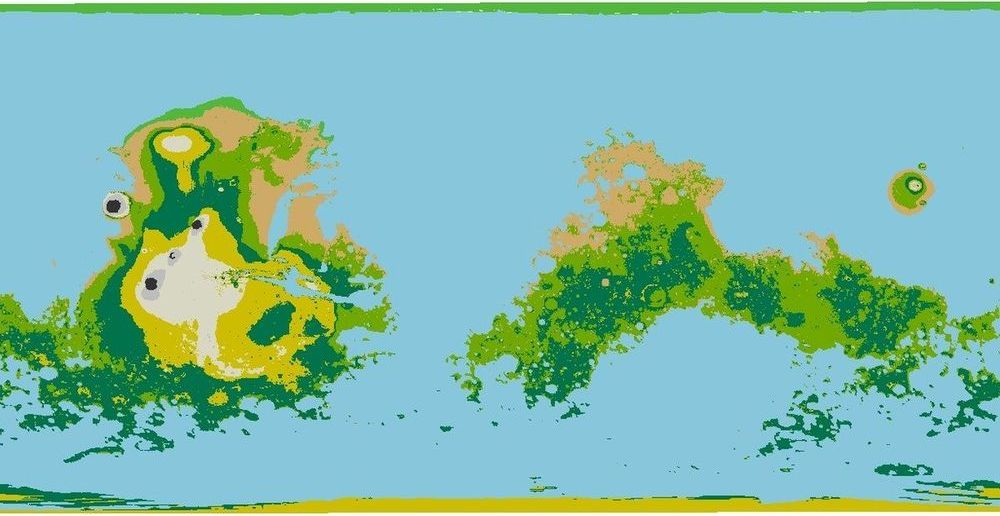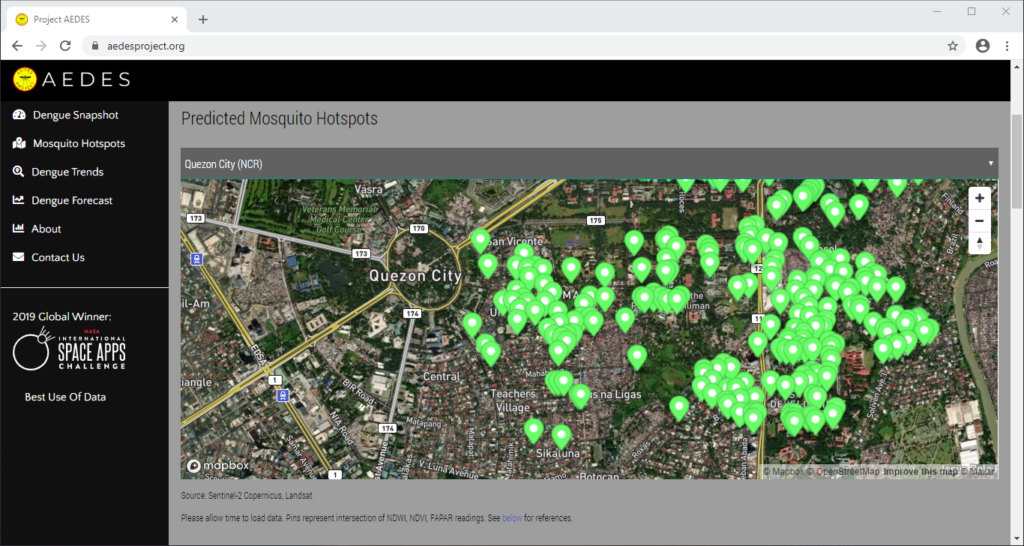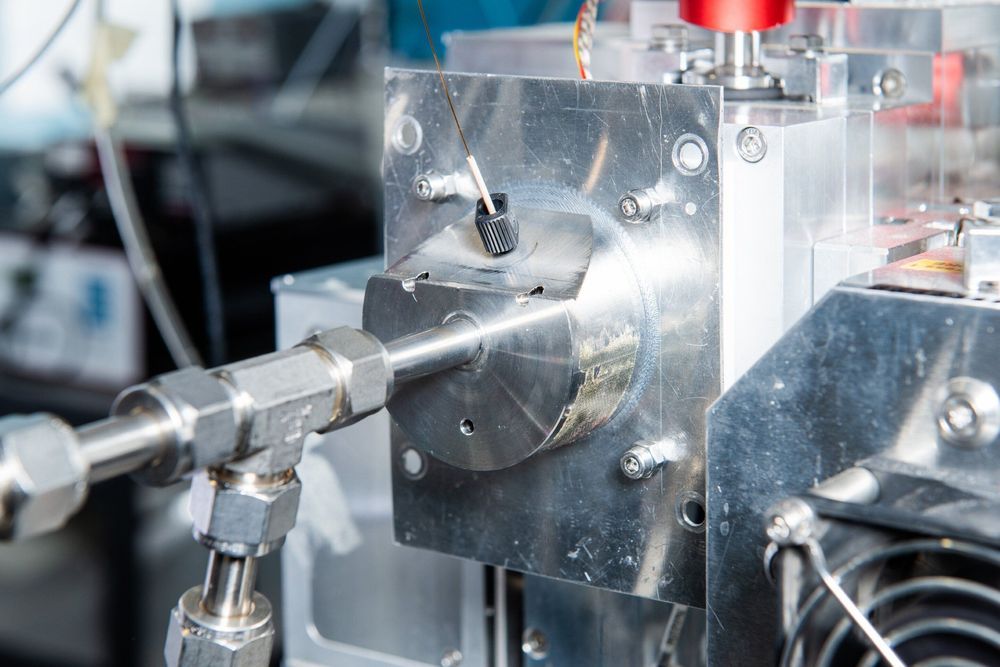Starship lifts off and a terraformed Mars map is published. How will Mars astronauts reach the surface? It’s Musk Reads: SpaceX Edition #193.
A version of this article appeared in the “Musk Reads” newsletter. Sign up for free here.
Starship lifts off and a terraformed Mars map is published. How will Mars astronauts reach the surface? It’s Musk Reads: SpaceX Edition #193.
A version of this article appeared in the “Musk Reads” newsletter. Sign up for free here.


MANILA, Philippines — A dengue case forecasting system using space data made by Philippine developers won the 2019 National Aeronautics and Space Administration’s International Space Apps Challenge. Over 29,000 participating globally in 71 countries, this solution made it as one of the six winners in the best use of data, the solution that best makes space data accessible, or leverages it to a unique application.
Dengue fever is a viral, infectious tropical disease spread primarily by Aedes aegypti female mosquitoes. With 271,480 cases resulting in 1,107 deaths reported from January 1 to August 31, 2019 by the World Health Organization, Dominic Vincent D. Ligot, Mark Toledo, Frances Claire Tayco, and Jansen Dumaliang Lopez from CirroLytix developed a forecasting model of dengue cases using climate and digital data, and pinpointing possible hotspots from satellite data.

Correlating information from Sentinel-2 Copernicus and Landsat 8 satellites, climate data from the Philippine Atmospheric, Geophysical and Astronomical Services Administration of the Department of Science and Technology (DOST-PAGASA) and trends from Google search engines, potential dengue hotspots will be shown in a web interface.

Global warming is a complex problem that is not easy to solve. While world leaders seem to be dragging their feet over the issue, Yotam Ariel, founder of Bluefield, believes he might have at least one piece of the puzzle sorted. Methane monitoring from space. By leveraging a network of microsatellites with a proprietary sensor, Bluefield plans to deliver alerts and analytics to oil and gas clients to help combat the inadvertent release of methane gas
Methane, a greenhouse gas, is leaking into the atmosphere. One might ask, “Why bother with methane, isn’t carbon dioxide the problem?” Well, according to the IPCC (https://www.ipcc.ch/), methane is 84 times more potent than carbon dioxide, which is clearly a bad thing for global warming. Methane is believed to be responsible for 25% of global warming and knowing who is emitting, when, and how much, would be a massive step towards reversing climate change. Since between 50 and 65% of total global methane emissions come from human activities, being able to identify and stop leaks is crucial to lowering greenhouse gases in our atmosphere.
Bluefield plans to specialize in methane gas detection and not try and solve all problems all at once and thereby reducing complexity. Further reduction in complexity is achieved by leveraging outside suppliers where applicable that complement the Bluefield plans. By reducing the complexity, Bluefield can focus on its core mission and specialty. Areas outside of detection such as the satellite parts, ground stations, the launch, and other services will be outsourced. This will allow Bluefield to quickly move through its development stages. Whereas it might take up to 10 years for a space agency like NASA, JAXA or ESA, to fund, design, test and launch a custom satellite, Bluefield aims to accomplish this as early as next year.
In fact, the prototype for the first microsatellite design has already been completed. Bluefield shortlisted several suppliers and the final selection will be made soon. The company is well on its way to testing its technology in orbit after completing both field tests and high-altitude balloon tests this year. By mounting its newly developed sensor on several backpack-sized microsatellites, Bluefield will be able to collect enough raw data to provide methane emission monitoring at a previously unthinkable level in terms of global coverage, high resolution and at a price point well below what is currently available.

Researchers at the Paul Scherrer Institute PSI have developed a new method to analyse particulate matter more precisely than ever before. Using it, they disproved an established doctrine: that molecules in aerosols undergo no further chemical transformations because they are enclosed in other suspended particulate matter. In the smog chamber at PSI, they analysed chemical compounds directly in aerosols and observed how molecules dissociated and thus released gaseous formic acid into the atmosphere. These findings will help to improve the understanding of global processes involved in cloud formation and air pollution, and to refine the corresponding models. The results of this investigation are published today in the journal Science Advances.
The familiar scent of a pine forest is caused by α-pinene. This is one of the volatile organic compounds in the oils of conifer trees, and it also occurs in eucalyptus and rosemary. The smell triggers pleasant feelings in most people. Less pleasant is that under the influence of radicals, the compound changes into other compounds in the atmosphere, so-called highly oxidised organic molecules. Some of these are reactive and to some extent harmful substances. They have only recently come under scrutiny by atmospheric researchers, and their role in cloud formation is not yet understood.
These highly oxidized organic molecules are less volatile than the starting substance α-pinene and therefore condense easily. Together with dust particles and other solid and liquid substances in the air, they form what we call particulate matter or aerosols.


If you are a Lifeboat subscriber or have been reading these pages for awhile, you may know why it’s called “Lifeboat”. A fundamental goal of our founder, board, writers and supporters is to sustain the environment, life in all its diversity, and—if necessary—(i.e. if we destroy our environment beyond repair, or face a massive incoming asteroid), to prepare for relocating. That is, to build a lifeboat, figuratively and literally.
But most of us never believed that we would face an existential crisis, except perhaps a potential for a 3rd World War. Yet, here we are: Burning the forests, killing off unspeakable numbers of species (200 each day), cooking the planet, melting the ice caps, shooting a hole in the ozone, and losing more land to the sea each year.
Regading the urgent message of Greta Thunberg, below, I am at a loss for words. Seriously, there is not much I can add to the 1st video below.
Information about climate change is all around us. Everyone knows about it; Most people understand that it is real and it that poses an existential threat, quite possibly in our lifetimes. In our children’s lives, it will certainly lead to war, famine, cancer, and massive loss of land, structures and money. It is already raising sea level and killing off entire species at thousands of times the natural rate.
Yet, few people, organizations or governments treat the issue with the urgency of an existential crisis. Sure! A treaty was signed and this week, Jeff Bezos committed to reducing the carbon footprint of the world’s biggest retailer. But have we moved in the right direction since the Paris Accords were signed 4 years ago? On the contrary, we have accelerated the pace of self-destruction.

Any future colonization efforts directed at the Mars all share one problem in common; their reliance on a non-existent magnetic field. Mars’ magnetosphere went dark about 4 billion years ago when it’s core solidified due to its inability to retain heat because of its small mass. We now know that Mars was quite Earth-like in its history. Deep oceans once filled the now arid Martian valleys and a thick atmosphere once retained gasses which may have allowed for the development of simple life. This was all shielded by Mars’ prehistoric magnetic field.
When Mars’ magnetic line of defense fell, much of its atmosphere was ripped away into space, its oceans froze deep into the red regolith, and any chance for life to thrive there was suffocated. The reduction of greenhouse gasses caused Mars’ temperature to plummet, freezing any remaining atmosphere to the poles. Today, Mars is all but dead. Without a magnetic field, a lethal array of charged particles from the Sun bombards Mars’ surface every day threatening the potential of hosting electronic systems as well as biological life. The lack of a magnetic field also makes it impossible for Mars to retain an atmosphere or an ozone layer, which are detrimental in filtering out UV and high energy light. This would seem to make the basic principles behind terraforming the planet completely obsolete.
I’ve read a lot of articles about the potential of supplying Mars with an artificial magnetic field. By placing a satellite equipped with technology to produce a powerful magnetic field at Mars L1 (a far orbit around Mars where gravity from the Sun balances gravity from Mars, so that the satellite always remains between Mars and the Sun), we could encompass Mars in the resulting magnetic sheath. However, even though the idea is well understood and written about, I couldn’t find a solid mathematical proof of the concept to study for actual feasibility. So I made one!